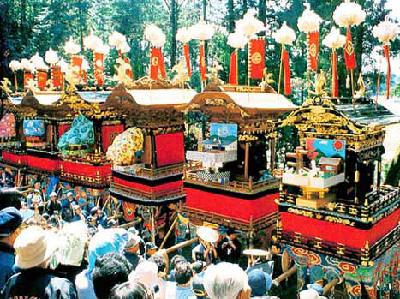|
Kutami Festival is held in Shinmei at the Shirahige Shrine. The festival takes place in spring when the cherry trees are in full blossom and there is a freshness in the air. The festival features six gorgeous floats that parade through the town to lively music.
The highlight of the festival is the 'thread-separating trick', which has been designated as a National Intangible Folklore Cultural Asset and a Prefectural Important Folklore Cultural Asset. The 'trick' is a kind of marionette performance. Threads are not directly linked to the 'trick', which is enacted using an original technique that differs to usual puppetry. The performance is highly valued in terms of both history and art.
This unique marionette performance changes its theme every year and may center around, for example, a folk tale, recent news, popular animation or sports. Each year presents something new and refreshing.
The highlight of the festival is the 'thread-separating trick', which has been designated as a National Intangible Folklore Cultural Asset and a Prefectural Important Folklore Cultural Asset. The 'trick' is a kind of marionette performance. Threads are not directly linked to the 'trick', which is enacted using an original technique that differs to usual puppetry. The performance is highly valued in terms of both history and art.
This unique marionette performance changes its theme every year and may center around, for example, a folk tale, recent news, popular animation or sports. Each year presents something new and refreshing.
| [+ADDRESS] | 
|














